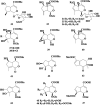Traditional uses, phytochemistry, pharmacology and toxicology of Lamiophlomis rotata (Benth.) Kudo: a review
- PMID: 35495311
- PMCID: PMC9050497
- DOI: 10.1039/d0ra01050b
Traditional uses, phytochemistry, pharmacology and toxicology of Lamiophlomis rotata (Benth.) Kudo: a review
Abstract
Lamiophlomis rotata (Benth.) Kudo is a herbaceous plant of the family Lamiaceae, subfamily Lamioideae. Approximately, 127 chemical constituents have been isolated and identified from L. rotata, including iridoids, flavonoids, phenylethanoid glycosides, polysaccharides, and organic acids. These chemical constituents have extensive pharmacological properties, which include anti-nociceptive, haemostatic, anti-inflammatory, anti-tumour, immunomodulatory, antioxidant, and cardio-protective activities. Documentation of its historical use in traditional medicine and contemporary phytochemical and pharmacological research indicate that L. rotata has significant potential in therapeutic and health care applications. Both whole extracts and individual chemical components isolated from this plant exhibit a wide range of biological activities that warrant further investigation. These investigations can be assisted by careful review of existing traditional knowledge from diverse cultural backgrounds. A new search for chemical and biological markers and reinforced protection of the germplasm resources of L. rotata are also important to ensure targeted and sustainable use of this medicinal resource. The aim of this review was to provide comprehensive information on the botanical characteristics, traditional uses, ethnopharmacology, chemical and pharmacological properties, toxicity profile, and conservation status of L. rotata, to improve understanding of its mechanisms of action so that novel therapeutic agents may be developed from this plant.
This journal is © The Royal Society of Chemistry.
Conflict of interest statement
There are no conflicts to declare.
Figures










References
-
- Editorial Committee of Flora of China and Chinese Academy of Sciences, Lamiophlomis Kudo. in, Flora of China, Science Press, Beijing, 1977, vol. 53, p. 480
-
- Yi J. H. Zhong C. C. Luo Z. Y. Xiao Z. Y. Chin. Tradit. Herb. Drugs. 1992;23:382–384.
-
- Committee for the Pharmacopoeia of PR China, (Part I), People's Health Publishing House, Beijing, PR China, 2015
-
- Zhang J. H. Xu L. T. Wang R. Zhang R. X. Li M. X. Jia Z. P. J. Lanzhou Univ. 2015;41:57–62.
Publication types
LinkOut - more resources
Full Text Sources

